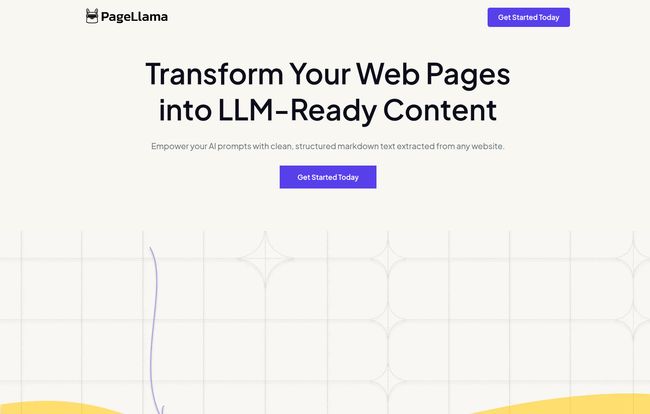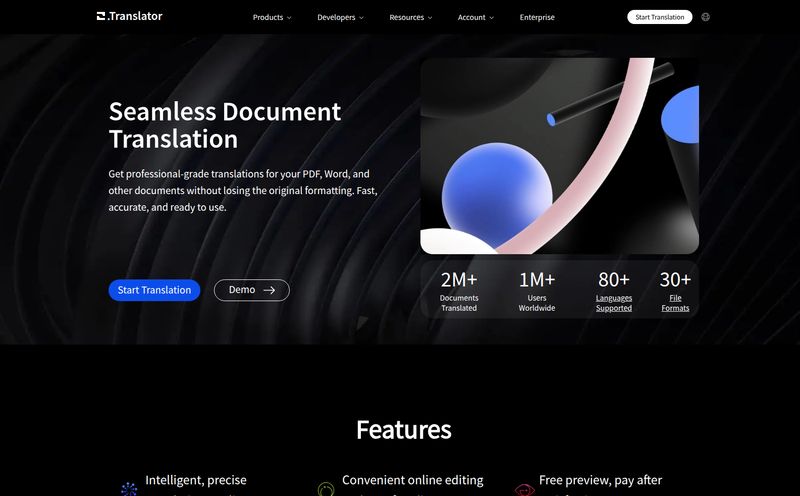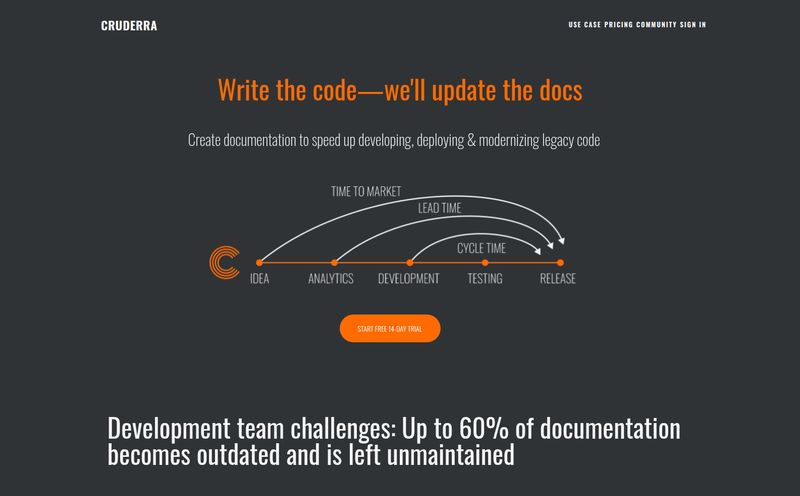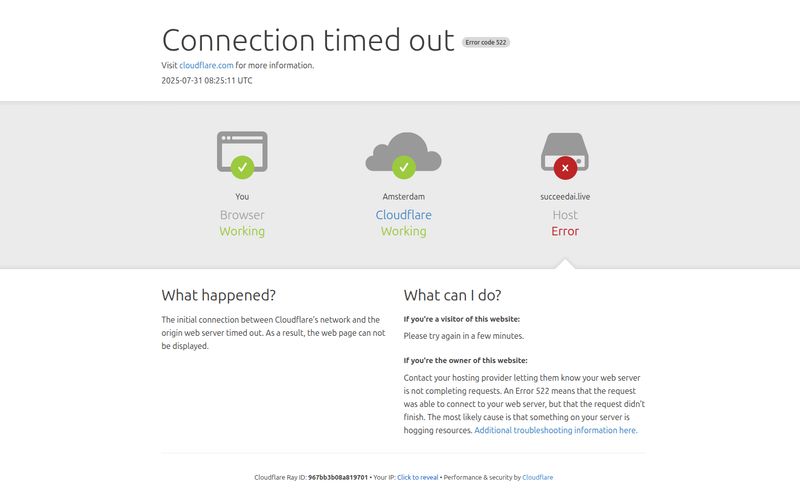If you've spent any time trying to feed web data into an AI model, you know the pain. It’s a special kind of digital misery. You find the perfect source—a competitor's blog, a product review site, a forum full of gold—and you're ready to go. Then you hit the wall.
The wall of messy HTML, rogue CSS, and JavaScript that seems designed to deliberately break your scraper. It's a nightmare. You spend more time cleaning the data than you do actually using it. I've been there, wrestling with Python scripts and endless regex patterns, thinking there has to be a better way.
So when I stumbled upon a tool called PageLlama, with its tagline of “Less trouble. More fun.”, my cynical SEO brain perked up. Another tool promising to solve all my problems? Sure. But this one felt a little different. It’s not just a scraper. It’s a translator.
So What Exactly Is This PageLlama Thing?
Think of PageLlama as a universal translator for the web. It takes a chaotic, jumbled web page and converts it into clean, structured Markdown. Why Markdown? Because Large Language Models (LLMs) love it. It’s simple, it's clean, and it doesn't have all the junk HTML that confuses models and, more importantly, drives up your API token costs.
Instead of feeding your expensive AI a whole buffet of code it has to pick through, you’re handing it a neat, pre-packaged meal. This is for the developers, the data scientists, the AI tinkerers, and frankly, anyone who wants to use web data without getting a computer science degree first.
It's about getting from Point A (a messy website) to Point B (usable AI-ready data) without the usual four-hour detour through Frustrationville.

Visit PageLlama
The Core Features That Actually Matter
I’ve seen a million feature lists. Most are just fluff. But a few things about PageLlama stood out to me as genuinely useful in the real world.
For Real, There's No Coding?
This is the big one. The entire process is built around a simple API call. You give it a URL, and it gives you back clean Markdown. That's it. No need to install libraries like Beautiful Soup or spin up a headless browser with Playwright. This dramatically lowers the barrier to entry. If you can make an API call, you can use PageLlama. It’s a huge win for rapid prototyping and for teams where not everyone is a hardcore Python developer.
Designed for the AI Generation
The term “LLM-ready” gets thrown around a lot, but here it has a tangible meaning. By stripping out unnecessary code and formatting, PageLlama’s output is inherently more token-friendly. When you're paying per token for services like OpenAI's GPT-4, feeding it clean Markdown instead of raw HTML can lead to some serious cost savings over time. I haven't done a massive A/B test on this, but logically, it just makes sense. Garbage in, garbage out... and expensive garbage at that.
They also mention Smart Caching, which is a nice touch. It means the platform caches content daily to speed things up, while still trying to fetch the latest data when needed. It’s a good balance between performance and freshness.
A Glimpse into the Future
Okay, this is where I have to be a bit of a realist. The website talks about future possibilities like direct-to-JSON conversion and automatic content summarization. These would be amazing features. Game-changing, even. But as of now, they are just possibilities. It’s exciting, and it shows the team has ambition, but don't buy it today based only on what it might do tomorrow. Still, it’s a promising roadmap.
Let’s Talk Money: The PageLlama Pricing Plans
Alright, the all-important question: how much does it cost? The pricing structure is refreshingly straightforward, which I appreciate. No confusing credit systems or weird overage fees hiding in the fine print. It's broken down into three tiers.
| Plan | Price | Best For |
|---|---|---|
| Starter | $19 / month | Small projects and individual tinkerers. You get 3,000 pages a month at a rate of 10 per minute. |
| Pro | $99 / month | The sweet spot for growing businesses or serious developers. This bumps you up to 30,000 pages a month and 25 per minute. |
| Enterprise | Custom | Large-scale operations that need higher limits and custom support. |
In my opinion, the Starter plan at $19 is a fantastic entry point. It’s cheap enough to experiment with for a personal project without breaking the bank. The Pro plan seems like the workhorse tier for any real application that's getting traffic. The jump in page count is substantial.
The Reality Check: Potential Downsides
No tool is perfect, and it’s important to be upfront about that. PageLlama is not a magical skeleton key that unlocks every website on the internet. The biggest hurdle, which they acknowledge in their FAQ, is anti-scraping technology. If a site is heavily protected by services like Cloudflare or has strict rate-limiting, PageLlama might get blocked, just like any other scraper would. It’s the nature of the cat-and-mouse game of data extraction.
You have to be realistic about what you’re trying to scrape. For most blogs, news sites, and general content pages, it should work just fine. For trying to scrape, say, Ticketmaster's live inventory? You might have a bad time. It's not a silver bullet, but its a very effective tool for the right job.
PageLlama vs. Building It Yourself
Some people might say, “Why pay for this when I can just write my own scraper in Python?” And they're not wrong. You absolutely can. I have. But it's a question of where you want to spend your time and energy.
Building your own scraper is like getting a box of raw engine parts. You have ultimate control and flexibility, but you have to assemble everything, tune it, and fix it when it breaks (and it will break when a website changes its layout).
Using PageLlama is like buying the pre-built, drop-in engine. It does one thing, it does it well, and it saves you a ton of time. For me, as I get older and my time gets more valuable, I'm increasingly a fan of the pre-built engine. I want to build my AI app, not spend a week figuring out why my scraper stopped working.
Frequently Asked Questions
What is PageLlama in simple terms?
It’s a service that turns messy web pages into clean, simple Markdown text via an API call. This makes the content easy to use for AI applications, research, or data analysis without needing to code a complex scraper.
Who is this tool for?
It’s ideal for developers, data scientists, researchers, and AI enthusiasts who need to pull content from the web to feed into machine learning models or other applications, but don't want to build and maintain their own scrapers.
Why might PageLlama fail to crawl a page?
The main reasons are anti-scraping mechanisms and rate limiting on the target website. If a site is heavily protected or detects too many rapid requests, it may block access.
How does it help reduce AI API costs?
By converting web pages to clean Markdown, it removes a lot of the unnecessary HTML code. This means you're sending fewer tokens to your LLM (like GPT-4), which can lower your overall API usage costs.
Is this better than just writing my own scraper?
It depends on your needs. If you require absolute control or need to scrape highly-protected sites, a custom solution might be necessary. If you value speed, convenience, and simplicity for common use cases, PageLlama is a fantastic alternative.
My Final Verdict on PageLlama
So, is PageLlama the answer to our web scraping prayers? For a lot of us, I think it is. It's a sharp, focused tool that solves a very specific, very modern problem. It removes a major point of friction in the AI development process.
It’s not going to solve every edge case, and you still need to be mindful of the websites you’re targeting. But for the 90% of tasks where you just need clean text from a web page right now, it feels less like a tool and more like a massive sigh of relief. It lets you get back to the fun part: actually building things with the data.



